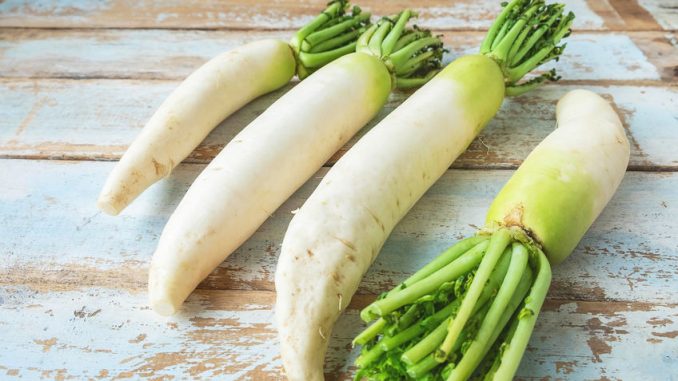
Daikon radish is one of those vegetables that has transcended the lore which is associated with what we tend to think of as a quite a humble salad vegetable. It is for many in the Far East, the ultimate low-calorie nutritionally rich vegetable.
There is a famous saying in China which was described by Shiu-Ying Hu in his book ‘Food Plants Of China’ as:-
“Eating pungent radish and drinking hot tea let the starved doctors beg on their knees.”
The saying alludes to the ancient value in eating this particular flavoursome but mildly peppery veg.
Typically the Daikon has many names. It is scientifically, Raphanus sativus var. longipinnatus and has been bred to be significantly larger than its smaller red relatives. We might call it mooli which is an anglicized name for it, Satsuma radish and even Japanese radish. There are many other names depending on which spoken Chinese and dialect is in common use. Daikon is a Japanese word meaning ‘big root’. It is however a Mediterranean vegetable which has passed down the silk road towards the east. Daikon is grown to be white and large and then chopped or sliced up.
Serving
Slice and serve raw as a garnish for salads, Far Eastern cooking especially Japanese and Chinese cooking. The daikon root is often pickled with a white wine vinegar to add an acidic pungency to dishes. It can be eaten as a side dish or added to main dishes where it is cubed, grated or cut into thin slices. The leaves should also be considered and add their own pungency to green salads especially if a Chinese or Japanese salad is included as a side dish.
You can grow Daikon in a similar fashion to radish which we have described as mooli types. They are even hardier than general summer types of radish.
Leave a Reply